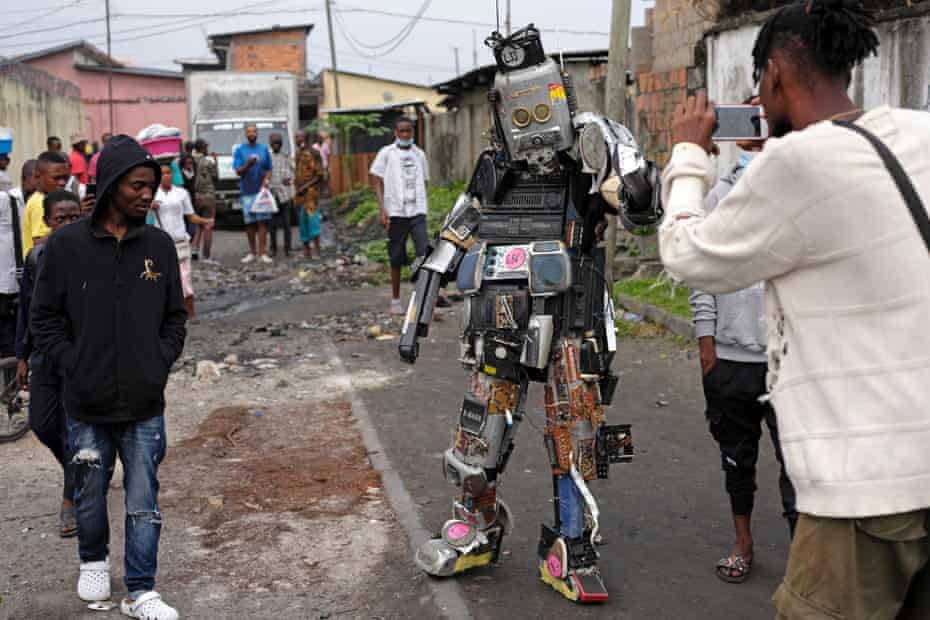Dolls found in rubbish dumps, radio parts and discarded flip-flops are among items used to create surreal costumes by a Kinshasa collective highlighting political and environmental issues
As a child, Shaka Fumu Kabaka witnessed the atrocities that took place during the six-day war between Ugandan and Rwandan forces in his home town of Kisangani in June 2000.
“It was not even our war, but a war between two foreign armies,” he said.
The fighting led to more than 1,000 deaths and left many more wounded in the northern city of the Democratic Republic of the Congo. “I lost relatives,” says Kabaka.
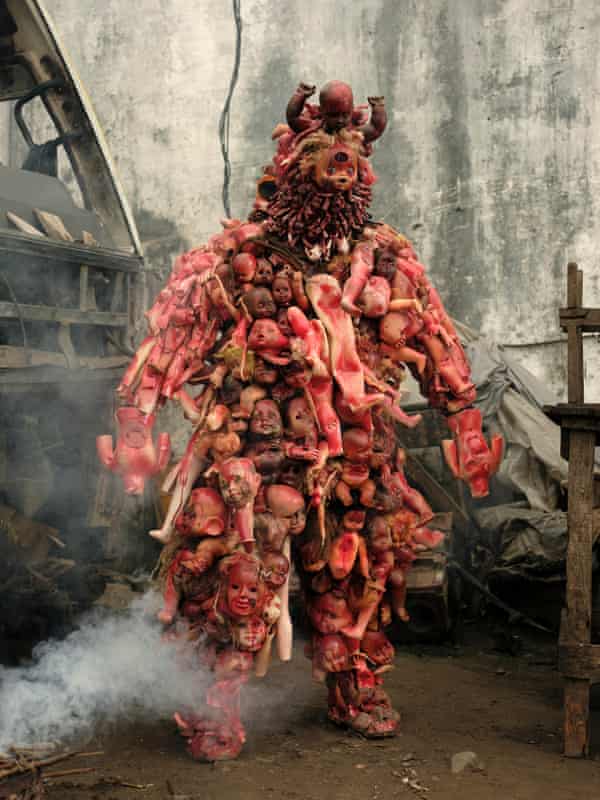
Kabaka, 33, is one of a small but growing band of multidisciplinary artists in the country’s capital Kinshasa who create elaborate costumes from household rubbish found at dumps or on the streets. Matshozi 6 Jours (Six Days of Tears) is a surreal outfit he made from scavenged dolls to honour the victims of the six-day war.
“Every time I see a broken doll lying around somewhere in the street, it reminds me of what happened in Kisangani. They symbolise the victims I saw with my own eyes,” says Kabaka.
It took a year to collect all the dolls. “The first time I wore the costume, it was a heavy burden. Not because of the weight, but because of the number of casualties it represents.”
Kabaka can often be found at the collective Ndaku Ya La Vie Est Belle, a group of Kinshasa street performers who turn their bodies into living sculptures. The collective has found a home in the Matonge district, where the singer Papa Wemba formed his band Viva La Musica. About 20 artists turn rubbish into bizarre wearable artworks. Using their costumes as political commentary, Kabaka says his work also highlights the desperate need to recycle in a city overflowing with rubbish and plastic.

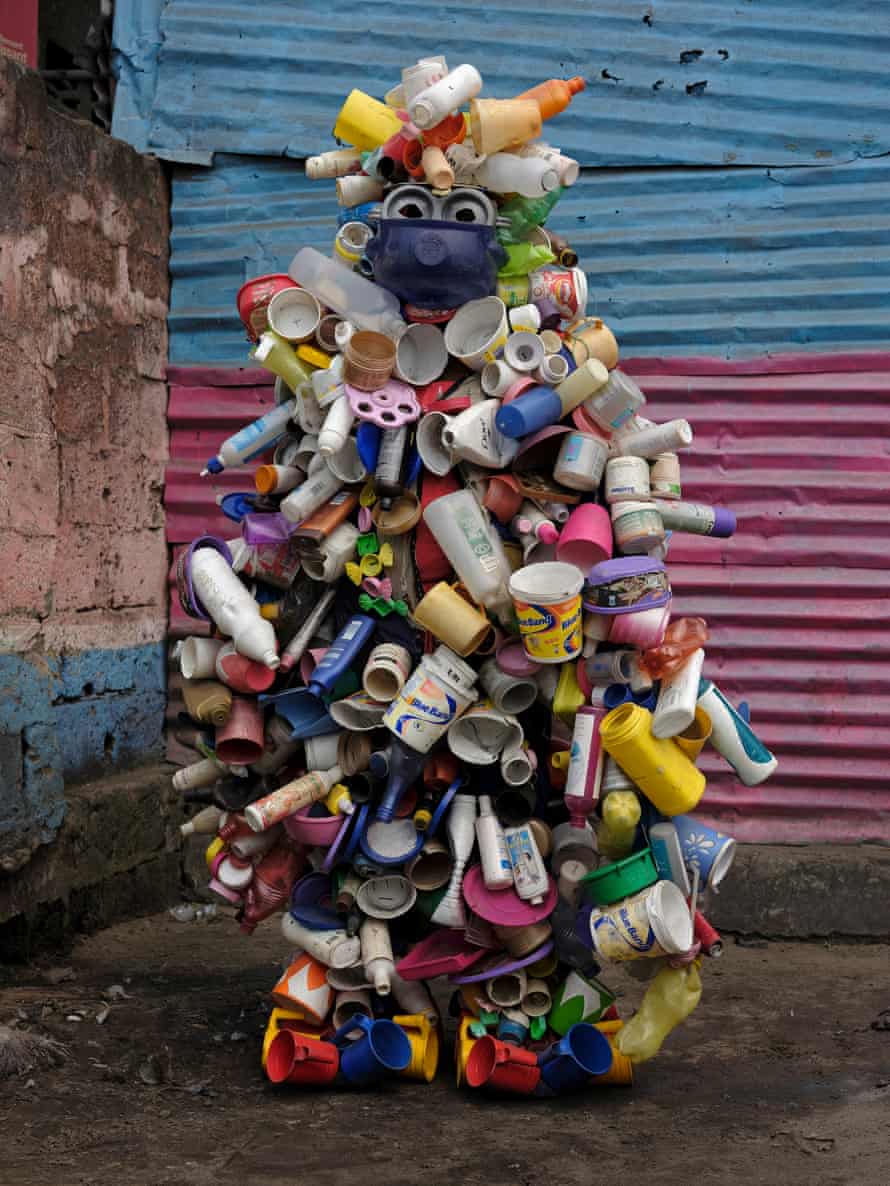

Despite their striking appearances, the artists say they are often ignored by the city’s residents (known as Kinois) or dismissed as eccentrics. “They look at us strangely,” says Kabaka.
“[I’m a] man with Rasta haircut who collects material at the rubbish dump – the inhabitants of Kinshasa call us crazy or bewitched.”
This August, Kabaka and his fellow artists will take to Kinshasa’s streets for KinAct, a week-long arts festival. Founded in 2015 by Eddy Ekete, who was born in Kinshasa, and Aude Bertrand from France, KinAct takes place in several of the capital’s neighbourhoods. As well as street performances, the festival runs workshops to introduce children to different art forms, including theatre, sculpture, painting and poetry.

Dressed in a piece made from drinks cans, Ekete was one of the first artists to roam Kinshasa’s streets in costume. The work, Homme Canette, was inspired by artists he had met in Brazil and west Africa.
Among the artists taking part in the festival is Kalenga Kabangu Jared, a student at Kinshasa art academy. Jared regularly takes to the streets dressed as Robot Annonce. The costume, made from broken radio parts, is designed to raise awareness of fake news. “People receive so much incorrect information and many inaccuracies are spread. I want to fight this,” says Jared.


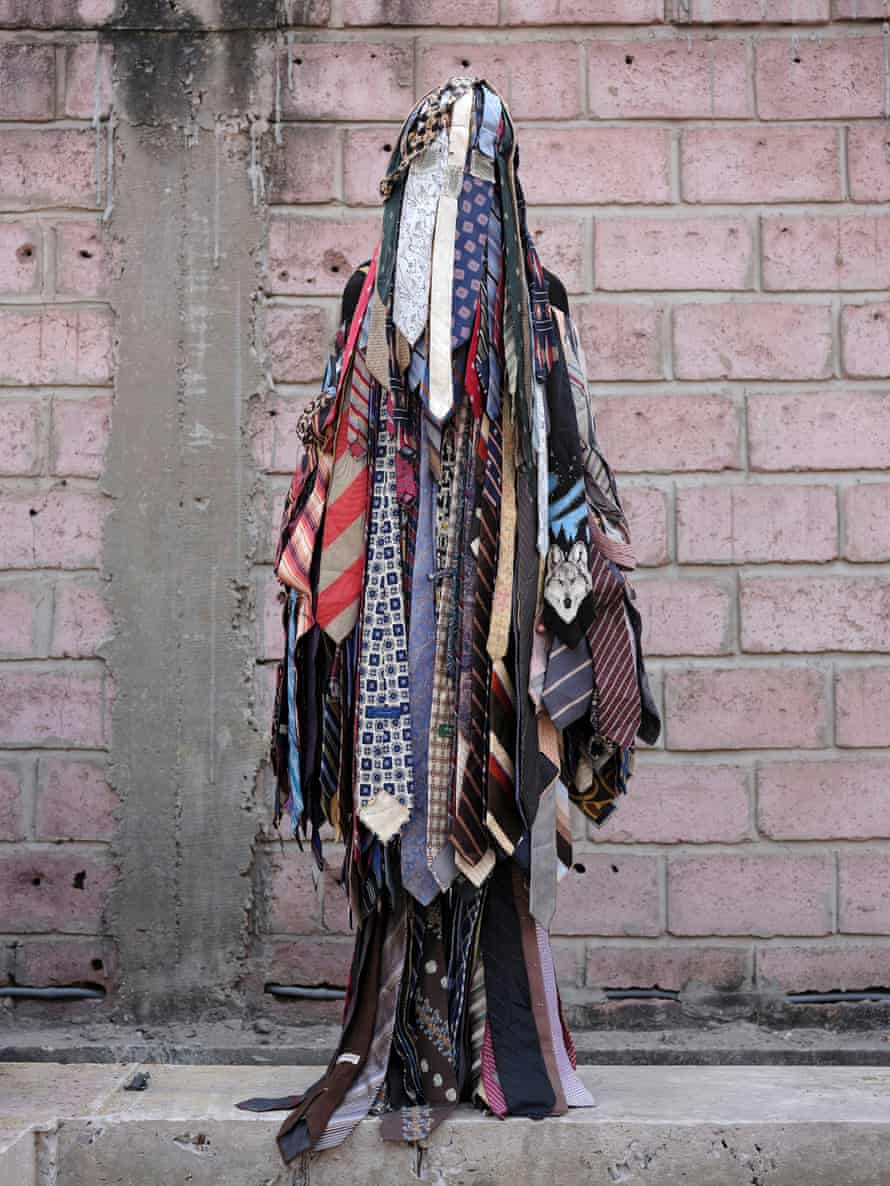

Another performer, Falonne Mambu, drew inspiration from her past when she created Femme Electrique (Electric Woman) out of electric wire. “I lived on the streets. I was homeless. But I discovered art and it has given me a voice,” says the 30-year-old.
“In the dark, the residents dare not come out of their houses. If there were light, social control would be greater, more people would be on the street. What I experienced on the streets of Kinshasa as a homeless young woman and what many girls still experience today I address through my paintings and performances. I can talk about sexual violence through my work,” says Mambu, who has worn her costume at protests against sexual violence and kidnappings.
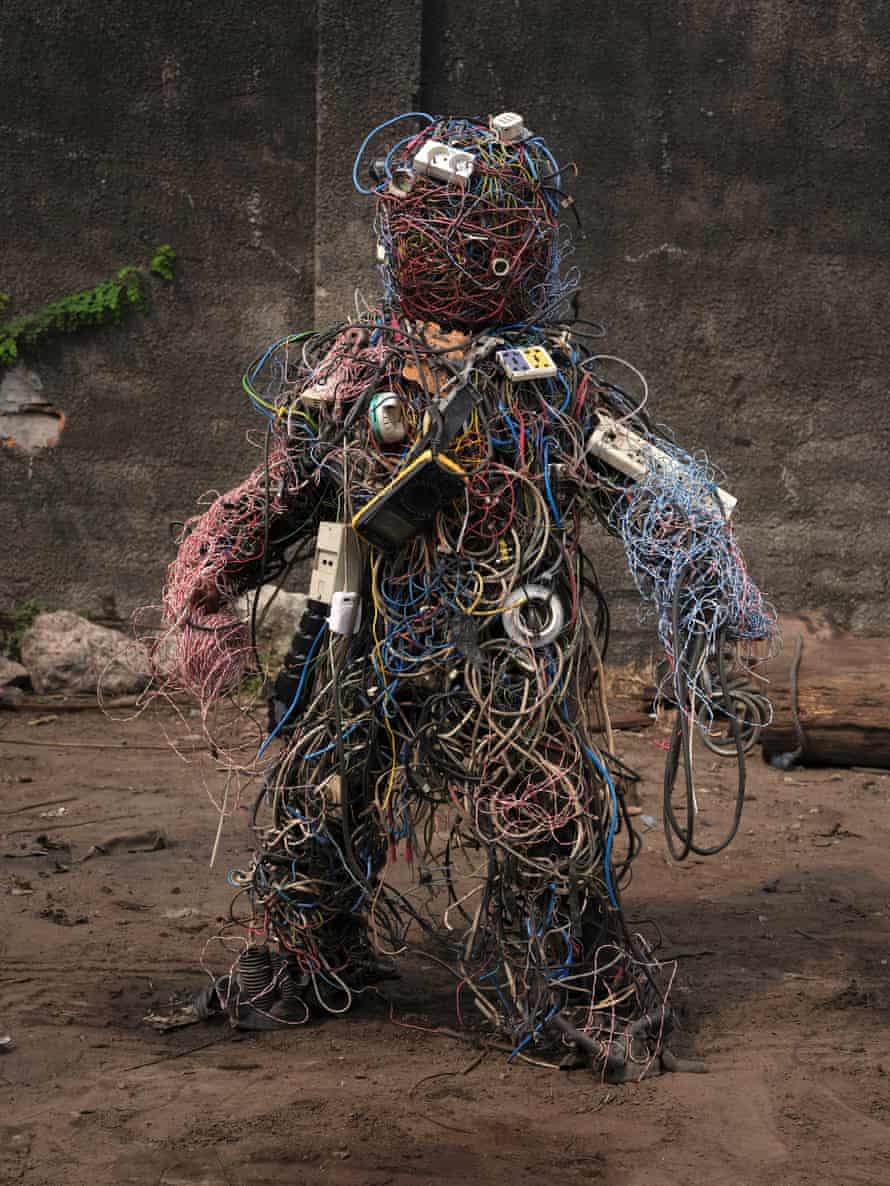
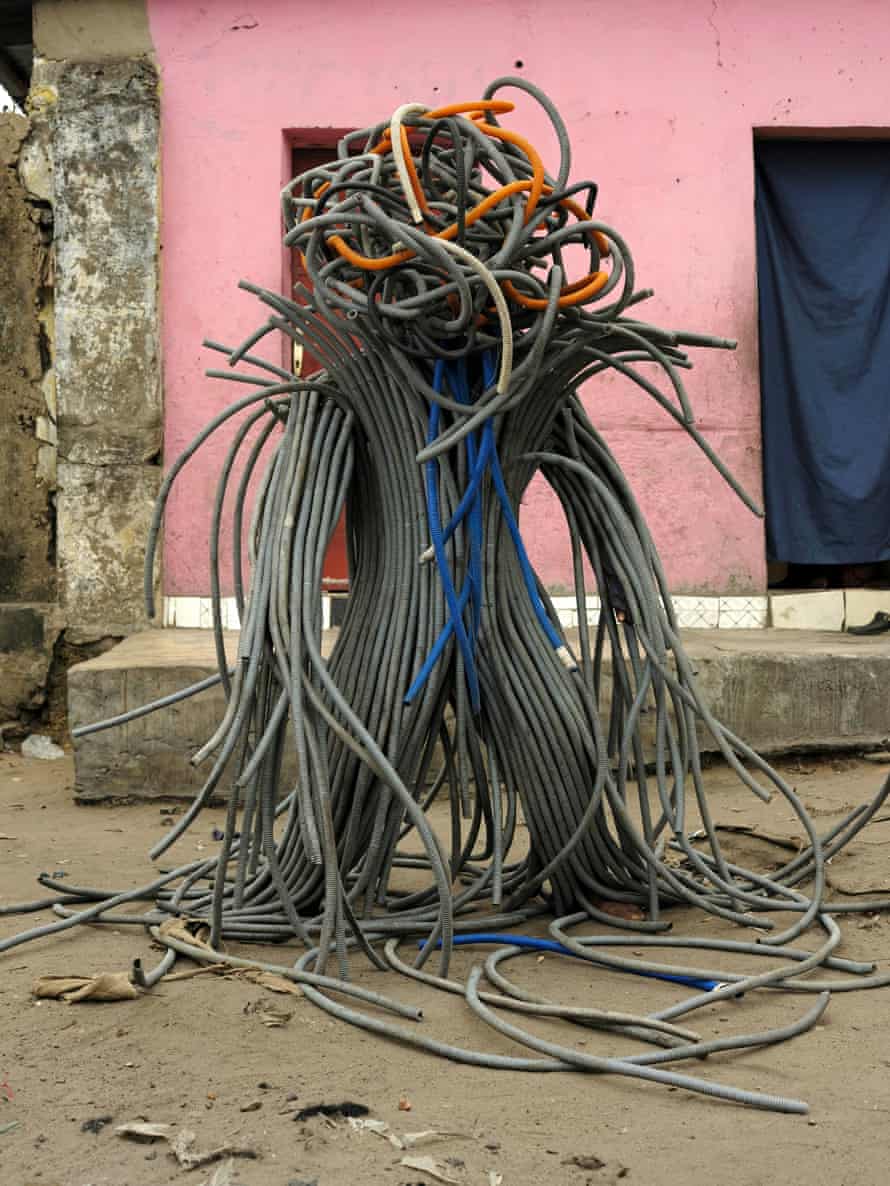
Flory Sinanduku, a member of art collective Farata, has made a name for himself in his neighbourhood – his courtyard is full of works of art. His costumes made of medicine packages and syringes are a statement about poor healthcare in the DRC, he says.
His friend Junior Nobiko opens a bag of plastic cable coatings. “You are the first to see it,” says Nobiko proudly. “But I don’t know yet if I’ll wear it at the KinAct.”
In the street, he asks some passersby to help him wriggle in and out of his costume.
